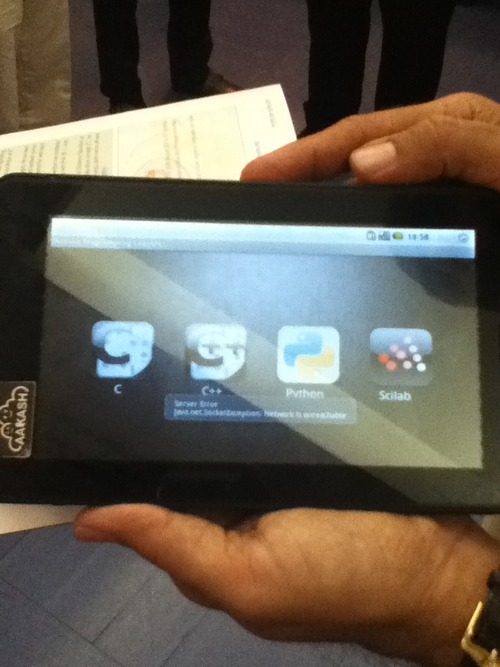Since writing this article a couple of weeks back, I had quite a few feedback comments, surprisingly all agreeable. Based on the discussions I wanted to elaborate on my first article to emphasize that some universities that embrace the hyperconnected era and use lecture time instead for interactive, hands on, lab or workshop style learning will thrive. Students and employers will see the value in that kind of physical experience of learning at university campuses. As John Seely Brown stated, in the 21st century we must learn on the fly. Explicit knowledge is of low importance compared to implicit knowledge which we gain by doing and social learning.
My new version of the article is below, followed by some excellent feedback I received from my father, Vincent Cheok.
Edited article:
What will be the future of the university in the hyperconnected era? Today at ICALT 2012 in Rome, there was a great keynote talk by Harold Jarche @hjarche and he talked about the university in the internet era at the end of the talk. Some words he said I felt to be very sharp and powerful. He talked about the growth of education start ups in Silicon Valley showing they venture capitalists are betting that the university model is under threat. He said the only thing keeping universities now is accreditation but that probably eventually employers accept the accreditation of on line courses. He said that all other industries have been changed by the internet so why wouldn’t the universities be changed?
After the talk I had a great discussion with Harold. We discussed that most undergraduate courses can be done on line. Universities value will be those who can do high end research, and have a high end brand. Like Harvard, Yale. MIT. I agree with Harold.
I think that we are the last generation of traditional professors and academic and we are like the dinosaurs who are about to become distinct. Basically almost all undergraduate courses can be done on line (and better on line). Students can have all the information and see superstar professors give their lectures on video. Similar to the other industries, why would you bother to go to a physical building when you can get better information and better lectures on line? Right now, as Harold said, the universities can survive because they provide accreditation. But sometime employers will accept the accreditation of on line courses and then the university as we know it is dead.
Actually I think we will instead go back to the essential core of universities. If we recall, early universities like Oxford had basically no lectures. You had hands on talks and tutorials with professors on campus. You learnt by doing.
A few high brand universities will survive as research, graduate, and high end (for very rich or very smart people) undergraduate courses. The Yale’s and Harvard’s will survive, a few smart universities who change to the internet model will thrive, and the rest will die out.
Those smart universities will realize there is no point in information transfer “brain dumping” which is done is lectures. What is the point to sit in a room and hear someone talk about something which students can view on line, maybe 1000 times better with super star professors, TED talks, and the like. Instead the class time can be used for hands on sessions, workshops, labs, and learning by doing. As John Seely Brown said in the 21st century, knowledge changes so fast, we have to learn on the fly. Universities can provide an interactive hands on physical experience.
Just like the music industry we must embrace the unstoppable change, because like a tsunami it is unstoppable and it is coming.
Addendum: feedback from Vincent Cheok
The fact that a university goes ‘online’ does not mean that it would disappear. The university will take on a metamorphosis so that things and matters that can go ‘online’ will go ‘online’ like lectures and digital communication but the physical location will be transformed into multi-site campuses of scientific laboratories and orchestral halls and trial manufacturing workshops like private science cities. There will be more joint ventures with private sector where some off-site campus or work experience workshops would be affiliated with major banks, law firms and manufacturers. Field trips would not be field trips but permanent field site trips where you are on-site location in the archaelogical digs while your lessons are beamed or streamlined over the net to you. When you do classical studies you will be on the ground in what were ancient Greece and Rome! Every university has to be part of a conglomerate of activity marrying theory with practice all the way from go. The world would be ‘smaller’… In that sense all the surviving universities in the new age will be global and international, like a global citizen answering only to the United Nations! Each such university would be akin to the Vatican!



